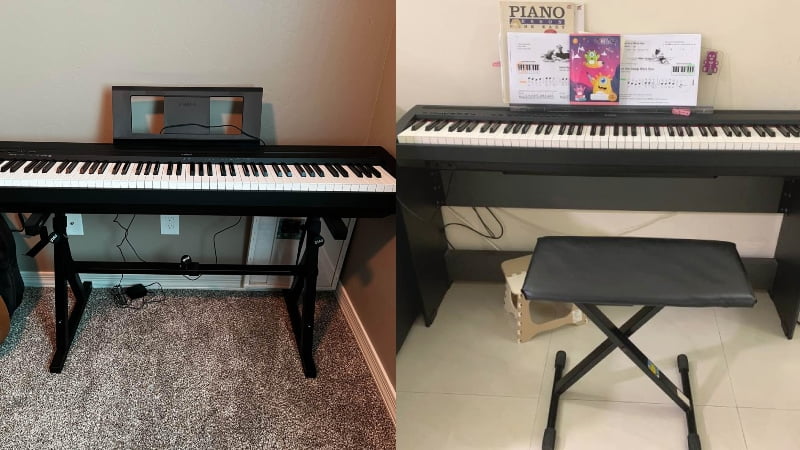Looking for a digital piano for beginners?
Then there’s a high chance you’re looking at Yamaha models. After all, Yamaha is known for producing a wide range of digital and acoustic pianos for anyone, from beginners all the way to professionals. And two very popular options for beginners out there are the Yamaha P71 and the Yamaha P95.
In this Yamaha P71 vs P95 comparison, I found that the P71 is the better option overall. For starters, the P95 has been discontinued, so you will be hard-pressed to find a brand new version of it, so you’ll likely have to buy it second hand.
On top of that, since the P71 is newer, it does come with slightly more advanced features. While they might seem very similar at the surface level, they are actually pretty different, which is why I had a lot of fun testing and comparing these two instruments.
Yamaha P71 vs P95: Comparison Chart


Last update on 2025-05-08 / Affiliate links / Images from Amazon Product Advertising API
Yamaha P71 vs P95: The Differences
To figure out the winner between these two, I decided to compare each of the features up head to head. And for the most part, these pianos were tied. But by the end, the score was 3-2 in favor of the P71. While both these pianos offered great tones and feel for beginner pianos, the deciding factor in the end was that Yamaha still manufactures the P71 while the P95 has been discontinued, which makes it close to impossible to find a brand new P95.
Feel & Playability
The winner: Tie
This was a very back-and-forth comparison. On the one hand, the Yamaha P95 has a better hammer action system while the P71 has better touch response. And since both of these pianos offered lackluster key textures, I decided that they were tied in terms of feel and playability.
+ Hammer Action
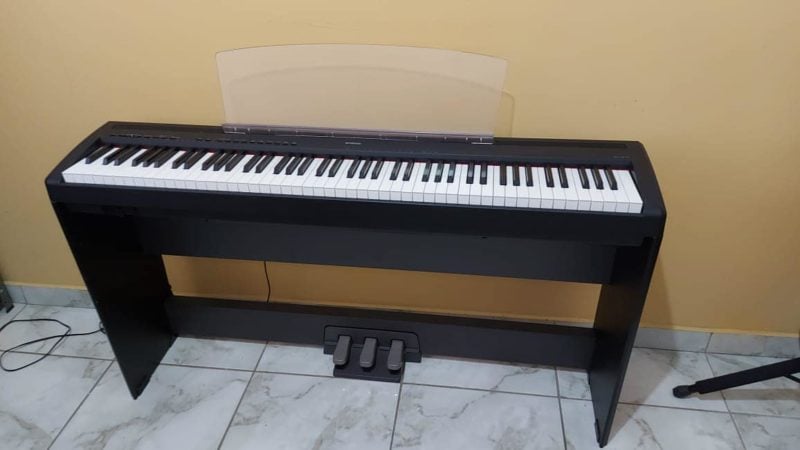
The Yamaha P95 is equipped with the Graded Hammer System (GHS) of Yamaha. This is one of the premier features of the piano, as the GHS is known to provide a very similar feel to that of an acoustic piano. With lighter keys on the right side and heavier keys on the left side, I found that playing the P95 felt very close to playing an acoustic piano, which is a very important characteristic of a beginner’s digital piano.
With that said, the Yamaha P71 sports a similar progressive hammer action system, just not the Yamaha GHS. This was a slight let down, and in my research, I found that this is only present on the Amazon exclusive P71 since the non-exclusive Yamaha equivalent, the P45 is equipped with the Yamaha GHS.
+ Key Texture
In terms of key texture, you don’t get much from either of these pianos. At first glance, it was easy to see what I was dealing with. Both of the pianos featured glossy plastic keys. Now, this isn’t a big deal for beginner pianos as most students don’t mind the difference too much. However, it still would have been nice if Yamaha included some sort of coating to simulate the feel of ebony and ivory keys. You don’t exactly get coated keys in this price range, so it’s easy to understand why these pianos have glossy keys, but nonetheless, it would have greatly increased either of these piano’s qualities if they had coated keys.
+ Touch Response
This is the area where the Yamaha P71 won out in terms of playability, which is why these two pianos were tied in this category. The Yamaha P95 is touch sensitive, so if you press the key lightly, it will play the note softer. However, customers have pointed out that the piano doesn’t respond like an acoustic piano and playing around with the sensitivity takes some practice.
The Yamaha P71, on the other hand, has adjustable touch response. So, you can set the piano to either hard, medium, soft, or fixed mode, where it will adjust the sensitivity accordingly. With this feature, you can set the piano exactly how you like it. For example, if you have heavier hands, you can set it to “hard” mode, while if you have a naturally light touch, you can set it to “soft” mode.
Tone
The winner: Yamaha P71
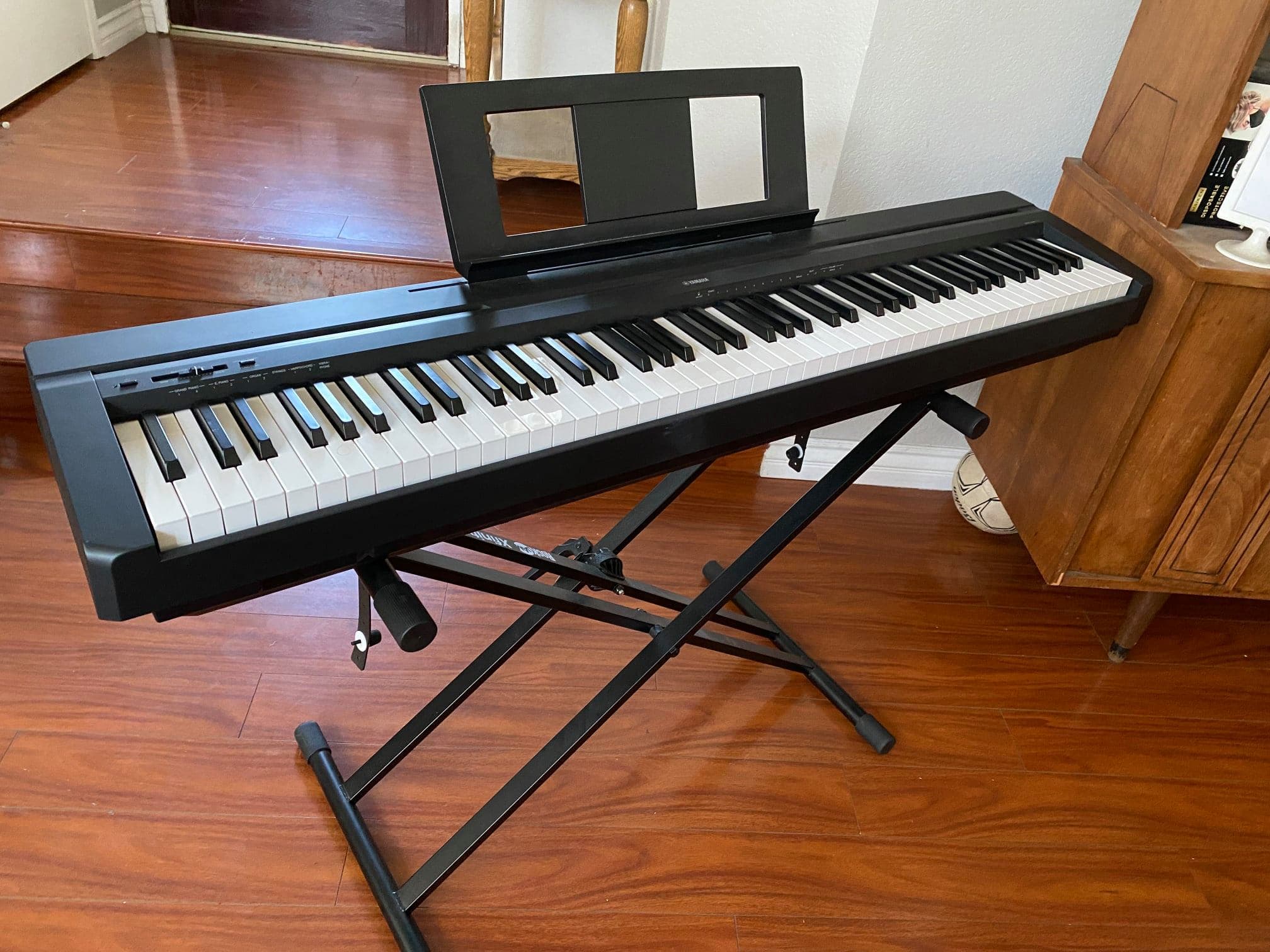
When I first read about these piano’s specs, I figured they would have the exact same sound and tone quality. After all, they use the same tone generator. However, after testing them out myself, I found that the Yamaha P71 had better voice quality overall. This could be for a number of factors, and is probably because the P71 is still in circulation, which means that the samples could be more regularly updated or just be higher quality in general.
+ Tone Generation
Both of these pianos use the AWM Stereo Sampling method. When stripped down to its bare basics, this is basically the standard sampling method wherein a player presses a key, which then triggers a pre-recorded sample of a real instrument. However, with AWM, you get higher-quality samples with natural decay, which is what makes both of these pianos sound better than a lot of others in their price range.
With that said, while both pianos use the same tone generation method, I found the samples on the Yamaha P71 to be higher quality than that of the P95. I couldn’t pinpoint the exact cause of this, but when playing both instruments, I noticed that the P71 offered a more rounded and warm tone, while the Yamaha P95 sounded significantly more “digital”.
+ Sound Library
Both pianos offer relatively basic sound libraries, with 10 voices each. This isn’t a knock on their quality, as most digital pianos have only a few voice ranges to choose from. This is because unlike standard digital keyboards, digital pianos prioritize quality over quantity. So, while you only get to choose between 10 voices on either of these pianos, you can rest assured that they will be high-quality and sound great.
Piano Features
The winner: Yamaha P95
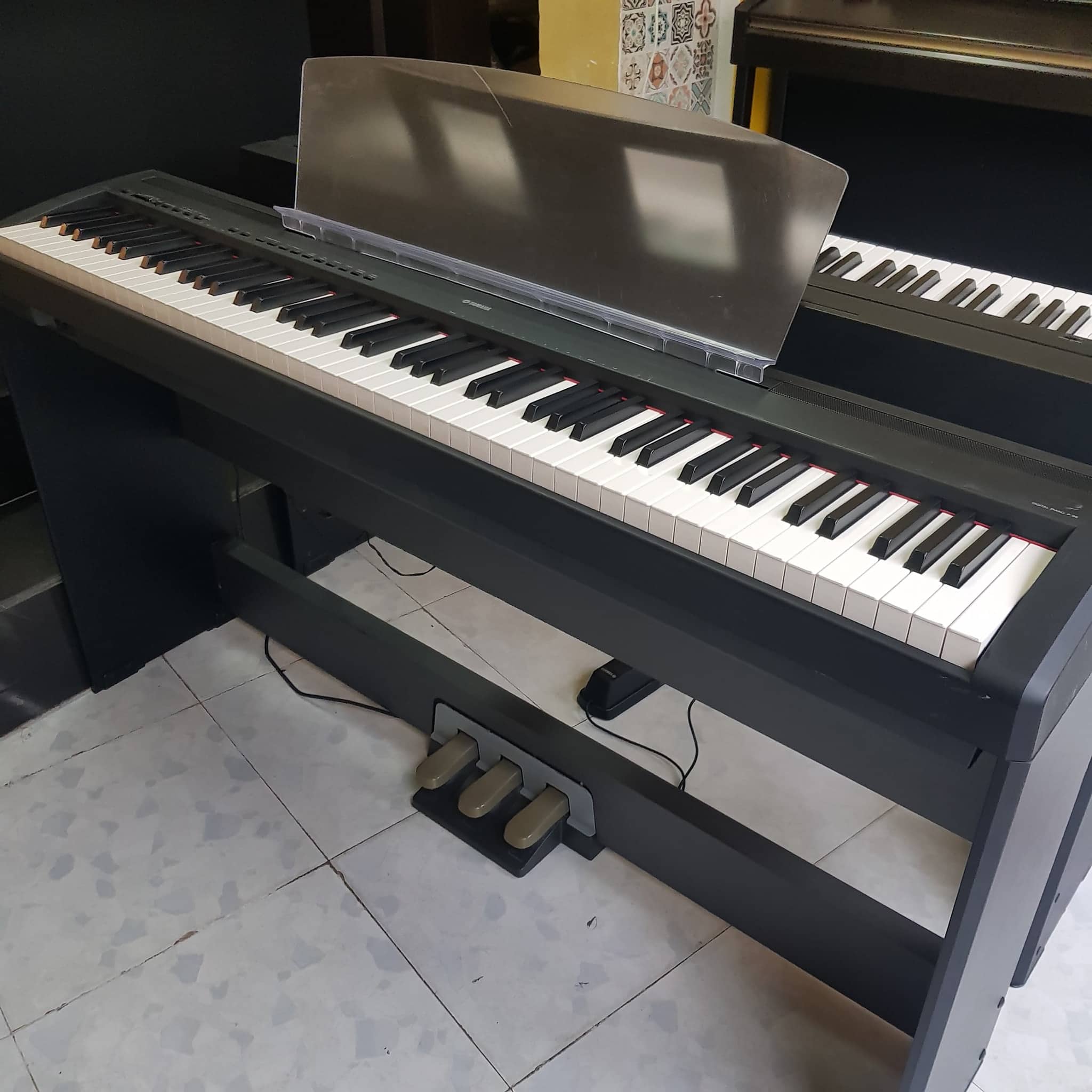
For the most part, both of these pianos share a lot of the same features. However, the reason the Yamaha P95 won out in this comparison is because it has better connectivity options. Aside from that, you can also record your own playing on the P95, which is a huge plus for piano students looking to listen to their own playing and make improvements.
+ Playing Modes
Both of these pianos only come with one additional playing mode: dual mode. This is a mode designed to create a unique tone and voice, which is ideal if you’re accompanying a vocalist or another musician. With this mode, you can load two voices at the same time which the piano will automatically blend together.
For example, many pianists often blend the strings’ sound and the piano sound to create a fuller voice that is great for accompanying other musicians. Another popular combination is a standard acoustic piano voice and an organ voice, for a modern sound great for jazz, RnB, and a lot of other types of music.
The one extra mode that is available on the P-95, however, is recording. With this piano, you can press the record button so that it will record whatever you play. From there, you can listen back to your playing to find areas that need improvement and to judge how a certain piece of music sounds when you play it. Sadly, you can only record one track with the P95, but it’s still way better than the P71, which doesn’t offer any recording functions.
+ Connectivity
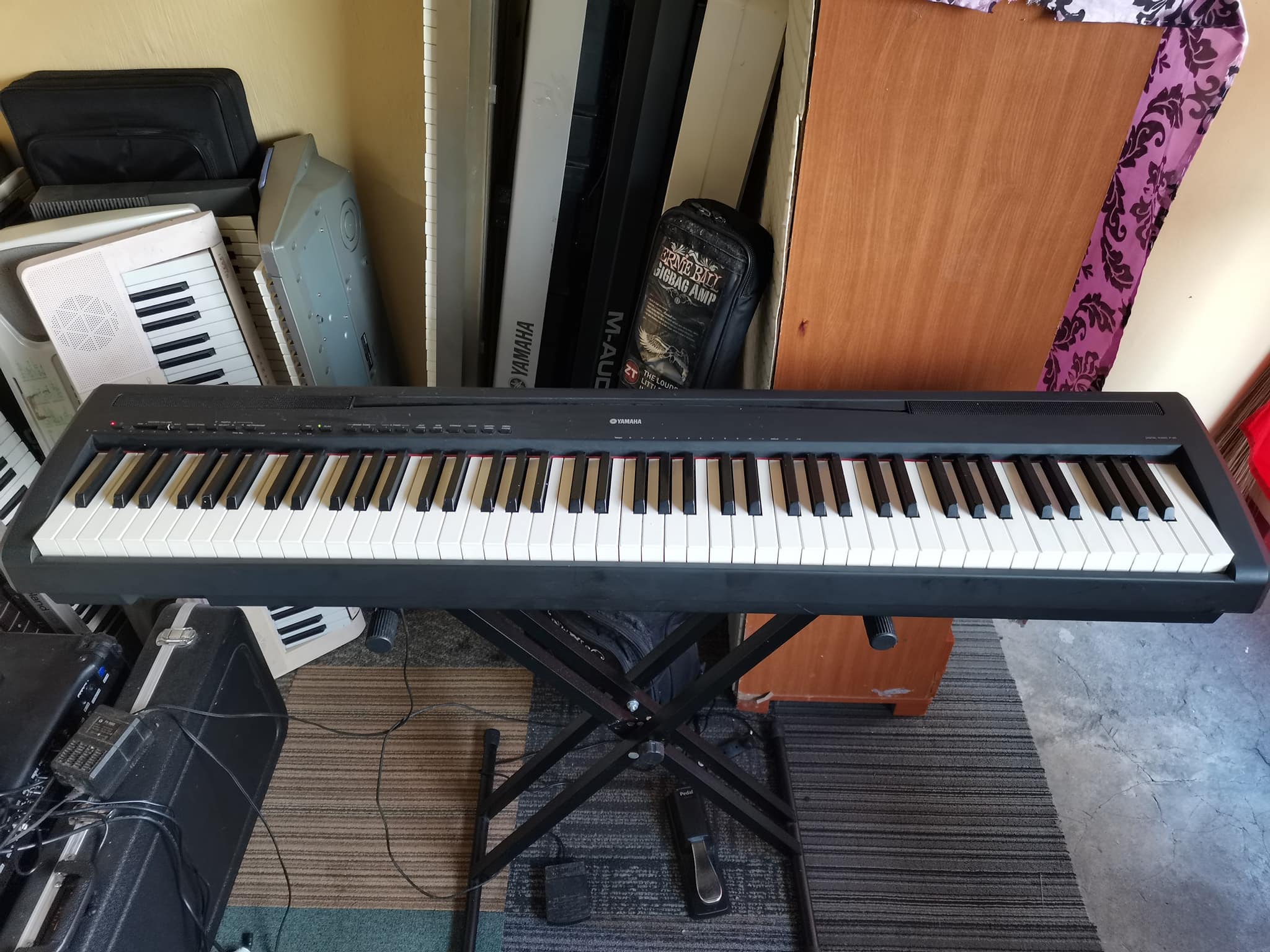
Another reason I found that the P95 had better piano features is that it offers MIDI connectivity. With a MIDI connection, you can connect the keyboard to a computer to use as a MIDI controller. So, in essence, you aren’t just limited to the 10 voices on the piano. You can hook the piano up to virtual instruments or piano learning apps on your computer, which you cannot do on the Yamaha P71.
While a wireless MIDI option would have been another cool addition, the Yamaha P95 doesn’t have that, which is a slight let down.
On top of that, though, both of these keyboards have the standard connections required from a modern digital piano such as an AUX input, headphone input, and also a line-out for you to connect to external speakers and sound systems.
+ Effects
Both of these pianos are loaded with reverb effects. However, aside from the reverb, you don’t have many other options with these pianos. You can use the reverb effects to add a lot of body and depth to the tone of your piano, which is very important for beginners. It would have been nice if the pianos included modulation and chorus effects, but considering that these are budget-friendly options, it’s understandable that they only have one built-in effect.
Availability
The winner: Yamaha P71
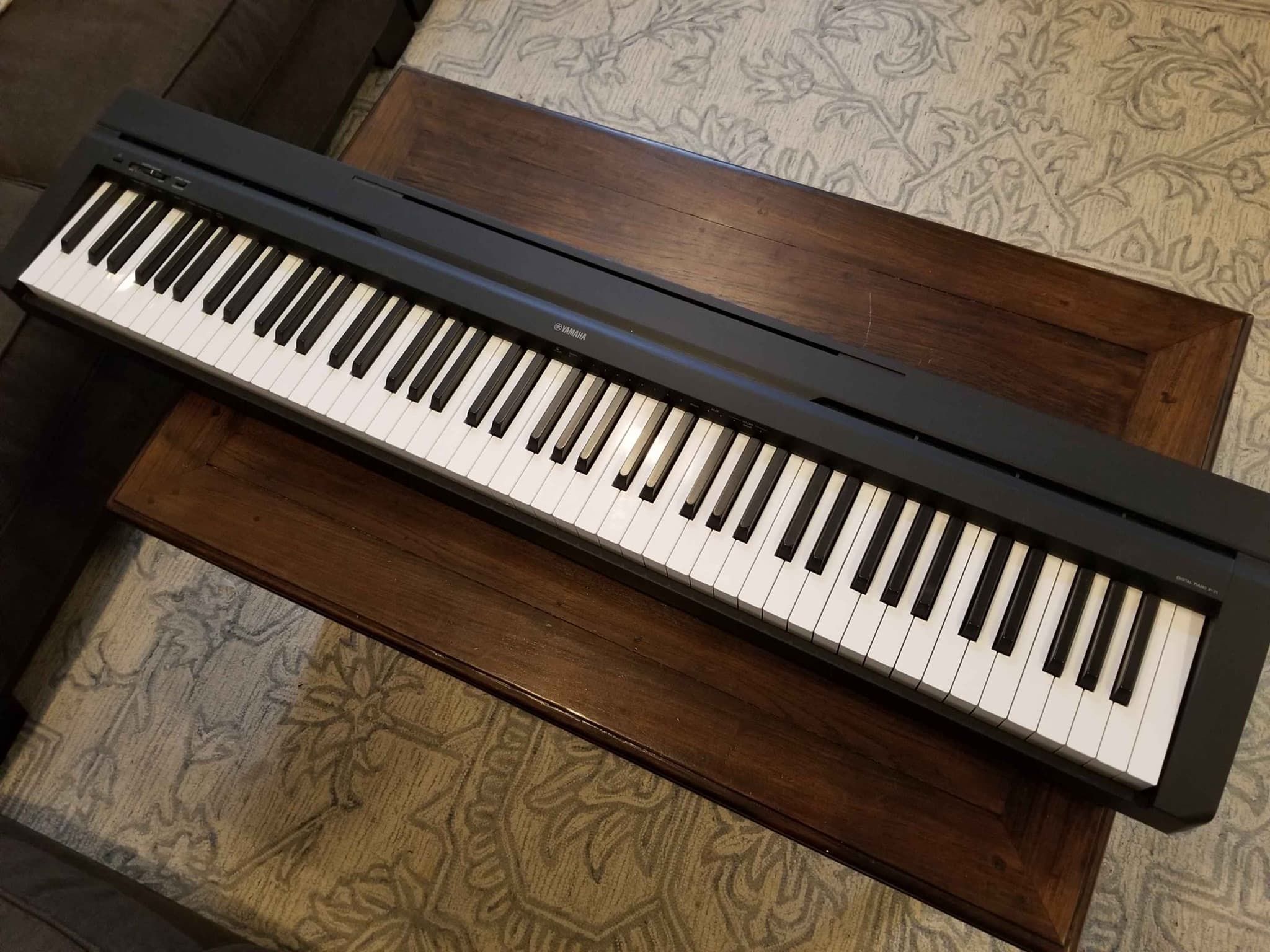
I don’t usually use availability as a point of comparison when I review pianos, but these two options were a special case. Up until this point, you may have noticed that both of these pianos are tied. So, the deciding factor was the fact that the P95 is no longer in circulation.
The “P” series of Yamaha is full of different options. And while the P95 used to be a favorite for beginners, it was slowly phased out by Yamaha and is no longer in production. So, if you plan on buying a P95 for yourself, you’ll find it close to impossible to get your hands on a brand-new option and you’ll have to settle for a second-hand one. And if you’re a beginner, it isn’t recommended to buy a second-hand digital piano unless you know what you’re doing.
On the other hand, the Yamaha P71 is an Amazon exclusive that is readily available on the site. So, if you’re looking to buy a P71 for yourself, it’s very easy to find a brand new version on Amazon. Since the P71 is readily available for people ready to learn the piano, I found it the overall better option, especially for beginners.
Yamaha P71 vs P95: The Similarities
Both of these pianos sharea a fair amount of similarities. As mentioned earlier, they both share the same AWM Stereo Sampling tone generator. And that isn’t a bad thing. In their price range, the AWM Sampling method generates some of the best and most realistic tones on the market. While the Yamaha P71 seemingly has more updated and realistic samples, both pianos have very similar tones and voices.
Additionally, both of these pianos were specifically designed for beginners. So, if you plan on beginning your piano journey, then either of these instruments will serve you very well. On top of that, these pianos both feature fully-weighted keys. While they use different hammer action systems, it’s very important for a beginner’s piano to at least have fully-weighted keys to make it easier for students to learn the ropes.
Both the P71 and P95 also come with similar effects and playing modes, which is probably because they are marketed to the same audience. And while I mentioned that both are great for beginners, keep in mind that the P95 has been discontinued, so you might have a hard time getting your hands on a brand new model.
Quick Rundown of the Yamaha P71
- Acoustic Piano Feel - Touch-sensitive keys allow for true expression and dynamic performance. The weighted action replicates the acoustic piano experience
- Elevated Sound - Choose from 10 unique Voices, including the richness and resonance of a Yamaha grand piano, with full dynamic sound and deep bass
- Effortless Control - Simple one-button operation and streamlined functionality designed to keep you focused on your music
- Layered Sound - Dual Mode lets you blend two Voices, like piano and strings, creating a rich, layered sound for an inspiring new playing experience
- Included sustain pedal allows for subtle variations and greater expression in your performances
Last update on 2025-05-08 / Affiliate links / Images from Amazon Product Advertising API
Quick Rundown of the Yamaha P95
No products found.
Product Videos
Related Articles to Yamaha P71
- Alesis Virtue Vs Yamaha P71: Can The Alesis Console Piano Beat Out The Amazon Exclusive?
- Yamaha P71 vs Korg B2 Comparison: Battle Of the Two Top Beginner Pianos On the Market
- Yamaha P71 vs Casio CDP-S150: Which Is the Best Beginner Piano On the Market?
- Yamaha P71 vs DGX-660: Can the Amazon Exclusive Beat Out the Premium Model?
- Yamaha P71 vs Donner DEP-20: Which Is the Best Beginner Piano?
- Yamaha P71 vs Casio PX-160 Comparison: Battle of the Two Best Digital Pianos on a Budget
- Yamaha P71 vs Alesis Recital: Why the Amazon Exclusive P71 Is the Best Option for Beginners
- Yamaha P71 vs Roland FP10 Review: A Tight-Knit Battle Where The FP10 Comes Out On Top
- Yamaha P71 vs Alesis Recital Pro: Which Digital Piano is the Best Option for Beginners?
- Yamaha P71 vs P125: Why the Yamaha P125 Is the Better Investment
- Yamaha P71 vs P45: Why the Amazon Exclusive P71 is the Better Digital Piano
Reference
Lulacruza is an electronic folk duo operating at the junction of the hypermodern and the ancient. Our music weaves together hypnotic female singing, South American folk instruments and electronic processing, while channeling pulsating waves from the source of creation.
Lalucruza is also a community where you can connect with other music lovers to collaborate, exchange ideas and share knowledge. A platform for who wants to learns the basics of playing piano, guitar, drum masters’ technique, etc.. is the premise of our website.
